#tantric buddhist
Text
Tantra: Tilopa’s Song of Mahamudra
Explore the profound world of Tantra and the teachings of Tilopa, an Indian Buddhist monk in the tantric Kagyu lineage of Tibetan Buddhism. Delve into the essence of Mahamudra, a set of spiritual practices that accelerate the path to Buddhahood.
Tantra
The Supreme Understanding
Tantra:
The Supreme Understanding
Introduction
Tilopa’s Song of Mahamudra
A deep and insightful look into the underlying ideas of Tantra.
Walking the road to enlightenment by embodying the full acceptance of all that is. A commentary on Tilopa’s marvelous song.
Tilopa,
was an Indian Buddhist monk in the tantric Kagyu lineage of Tibetan Buddhism.
He…

View On WordPress
#6 Yogas of Naropa#Anuttarayoga Tantra#Buddhahood#Buddhist masters#Compassion#Divine Feminine#Essence of teachings#Ganges river#Guru yoga#Kagyu lineage#Mahamudra#Mahamudra Song#Marpa Lotsawa#Naropa#Primordial Buddha#Supreme Understanding#Tantra#tantric buddhist#Tibet#tibetan buddhism#tilopa#Vajradhara#Wisdom#Yogi Milarepa
1 note
·
View note
Text
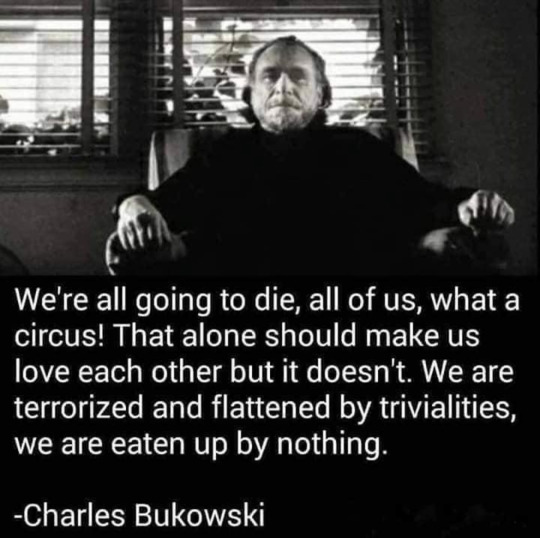
Those who seek happiness in pleasure, wealth, glory, power, and heroics are as naive as the child who tries to catch a rainbow and wear it as a coat.
~ Dilgo Khyentse Rinpoche
#Dilgo Khyentse Rinpoche#Padmasambhava#Guru Rinpoche#buddha#buddhist#buddhism#dharma#sangha#mahayana#zen#milarepa#tibetan buddhism#thich nhat hanh#four noble truths#manjushri#amitaba buddha#avalokitesvara#green tara#tantric#vajrasattva#vajrapani#rainbow body#bodhisattva#buddha samantabhadra
41 notes
·
View notes
Photo

A bronze Vajra (ritual thunderbolt), paired with the ghanta (bell), Tibet, 19th century, 18 cm, British Museum.
“The ‘vajra’ and ‘ghaṇṭā’ were the most important ritual implements of Vajrayāna Buddhism. The ‘vajra’, symbolising the unbreakable Absolute, hardly survives as a ritual object from Buddhist India but is found in Indonesia, Nepal, Tibet and Japan. Paired with the bell, it symbolised compassion or the 'male' skill in means for salvation; the bell was the symbol of supreme knowledge seen as female. Together they constituted a unity of coefficients for salvation. Held in the right and left hands respectively to make elaborate ritual movements, they are also the attributes of many deities.”
148 notes
·
View notes
Text
buddhist, but also, indus realm?
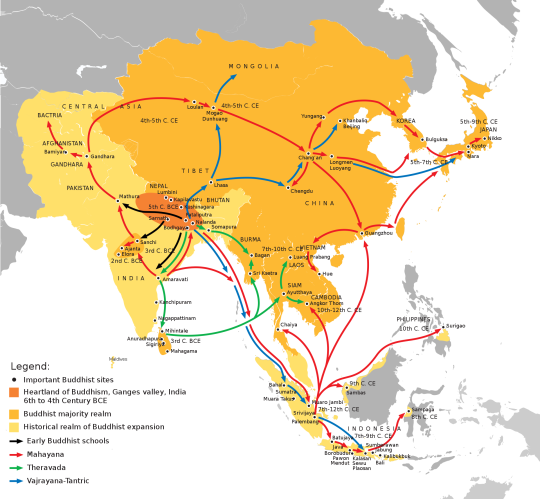
Central Asia and not ALL of East Asia but the western parts?
some interesting points on this
buddhist originally spread within west and south (in "india") - not eastwards and out
Mahayana developed outside Magadhi and travelled back
Thevarada did not spread west/north
Vajrayana did not go south or west
Buddhism went to Vietnam from China
Chang'an was a hotspot in China
Beijing, Mongolia & Tibet received Vajrayana-Tantric, only
Sri Lanka & Burma - only Buddhist countries in SA today both only received Thevarada
North China + East Asia originally received Mahayana Buddhism in the north only through Greek-influenced Central Asia and Vajrayana Tantric via Tibet
connection between Magadhi & Bhils ... & Sri Lanka ultimately
#buddhism#mahayana#tantric#hindu#hinduism#buddhist#buddha#asia#south asia#south east asia#east asia#central asia
5 notes
·
View notes
Text
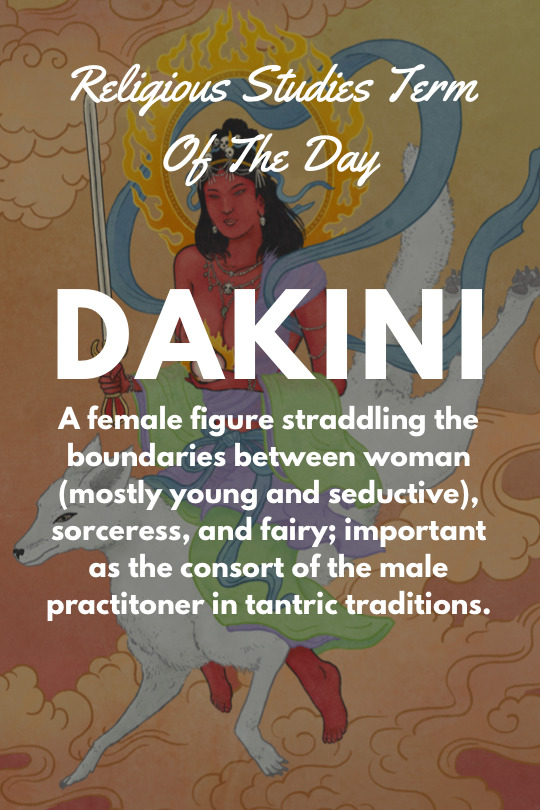
Religious Studies Term Of The Day: Dakini
Hey everyone! Now that the Christmas season is over, it’s back to Buddhism! Today I wanted to talk about a concept that I don’t think is super well known about in Buddhism: the Dakini. Dakini are complex creatures to talk about, but they are a sort of supernatural term that is pretty close to the English idea of a witch, or maybe even a fairy in some sense. They aren’t like a widespread Buddhist idea, but only find themselves in tantric traditions like the Vajrayana Buddhists. In these traditions, sex, whether it be literal or metaphorical, is a pathway to enlightenment, and it requires male and female sexual energy to accomplish that. I’m not an expert so please correct me if I am wrong, but my readings on the subject seem to imply that the Dakini is the source of the female sexual energy needed for the rituals, that she, whether she is a low class woman brought in for the job or an actual supernatural creature summoned for the task.
This term is super vague and flexible, so I have a hard time pinning it down, but a great example of a dakin would be Ma-gcig Lab-sgron, a figure of Tantric Buddhism born in 1055. She is complicated to pin down, as she is a real figure, but also a supernatural one, a person who has many titles and attributes that would take a while to look into, but she might be a good starting place for anyone curious about what a dakini means. But for now, that’s all I have to share. I hope you’re all safe and have a wonderful day.
#religiousstudies#religious studies#religion#religiousliteracy#religions#women and religious traditions#leona m anderson#pamela dicky young#Eva k neumaier#oxford#buddhist#buddhism#tantric buddhism#vajrayana buddhism#tibetan buddhism#dakini#woman#sorceress#fairy girl#tantric#factsdaily#fun facts#factoftheday
7 notes
·
View notes
Text
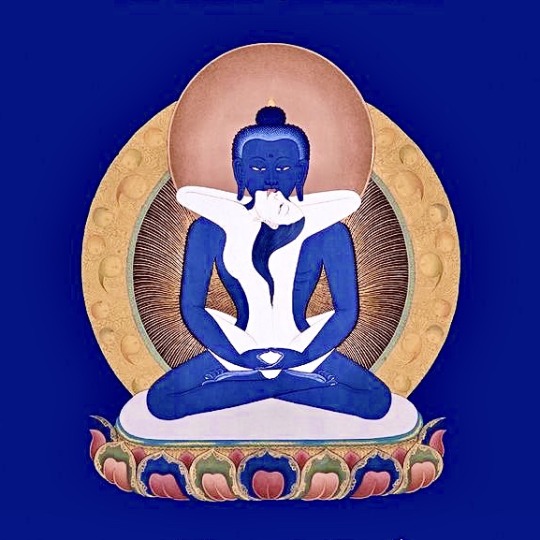
#Medicine Buddha#Buddhist imagery#Tantric unity of masculine & feminine#Yin Yang#Symbolic integration of light & dark#Symbolic harmony or balance
2 notes
·
View notes
Text
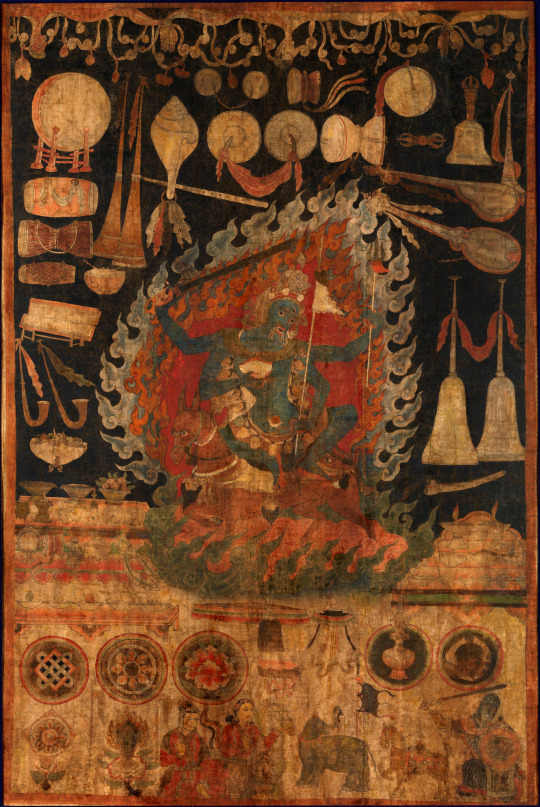
offerings to the Goddess Palden Lhamo
1 note
·
View note
Text
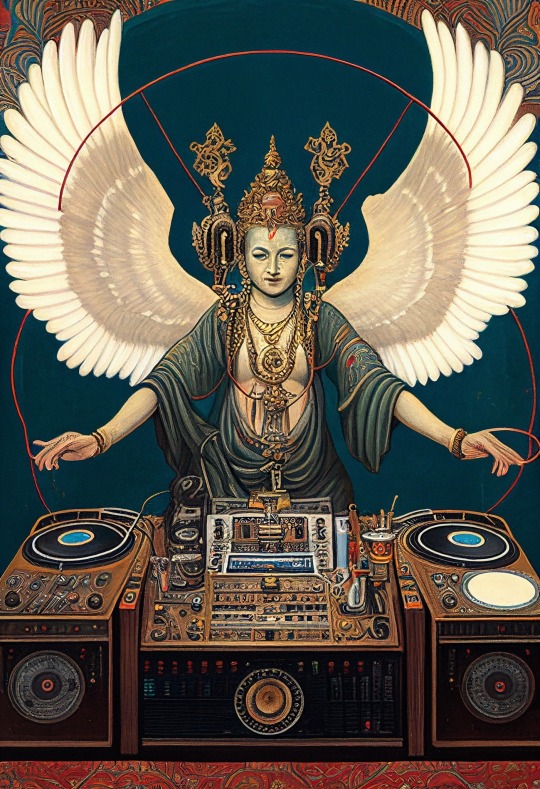

Dzogchen - The Garuda
Talon Abraxas
Dzogchen is 'The Great Perfection', the apogee of Tibetan Tantric Buddhist meditation accomplishment. It is the Buddha's enlightenment in rainbow light.
179 notes
·
View notes
Text
Buddhism? In my TLT?
It's more likely than you think!
The influence of Christianity is so obvious in TLT that is almost goes without discussion. Jod obviously took the Catholic education he got probably from colonial missionaries and used it as a template for his empire. But what's up with the Buddhist influence? Why literally name the process to lyctorhood after The Eightfold Path? (Did Jod even name this process?) There's seemingly no overlap from what I can tell, so why name one of the most sacred and secretive processes of your religion AND empire after one of the most famous and sacred spiritual practices in the world (i.e. Jod's cultural sphere)?
There is a connection between the process of lyctorhoodization and tantric Buddhism: the merging of physical with spiritual, the spiritual consumption of another to be closer to or achieve enlightenment, and the power dynamics at play. But that seems like an English Major Stretch™️ and not overt in the text.
Any one else confused by this? Any white knights with insight?
Do you think "the Eightfold path" is a purposeful (either in universe or narratively) allusion to Buddhism?
69 notes
·
View notes
Note
hey! i really enjoy your analysis of aang and zuko's relationship, and i was just wondering if you have any thoughts on this:

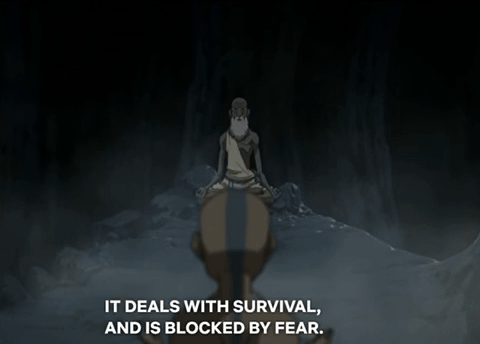
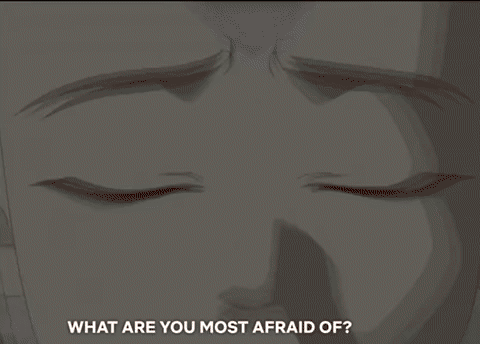
when aang considers what he's afraid of the most, he doesn't just see zuko - he sees the blue spirit. why do you think his fear is linked to that mask? zuko was the most amicable towards him when he put that mask on, and was hostile every other time.
Ooooh!! This is such a rich and meaty question!! And it's something I've wondered about but never dove into before.
I guess there are a couple of questions we need to explore. One, do we want to begin to analyze this from Aang's perspective or the series' themes, which, when put together, should offer us the fullest idea of what the intent might be? If we begin with Aang's perspective, then the next question we need to next ask what is Aang's view of Zuko and/or the Blue Spirit at this point in the narrative? My worry about beginning at that intimate level is that we might miss possible connections that a thematic understanding might facilitate and may, like many fandom analyses, leave it at a character level when, in fact, the characters exist to serve larger philosophical purposes, especially in a show like ATLA.
So, we'll return to those questions about Aang after we visit some questions about the broader themes here. We know for a fact that the team did a lot of research into Eastern philosophies that they had to then pack down into 24 minute episodes, preserving a surprising amount of complexity not in the words but in the actions and visuals. The 2 part Crossroads of Destiny episode is probably the most evocative of this practice. The four-way fight scene is celebrated for the way it masterfully shows character development through fight choreography. Then, Aang's crystal chamber he forms to master the Avatar State is a direct reference to a statement about pre-enlightenment in one of the foundational texts about Japanese Zen for American Buddhists, "The Three Pillars of Zen." The rapid explanations of the seven chakras with Guru Pathik might seem like a a skimming of Tantric beliefs based on the brief statements and processing, but it's another prime example the way ATLA suffuses meaning beyond the script.
What more can be said about the Earth (also called the Root or Muladhara) Chakra, then, that the show might reflect without stating it explicitly. Guru Pathik explains that the Earth Chakra "deals with survival." Is there any subject more prescient than that for our protagonist, the single survivor of an otherwise all-encompassing genocide? Other accounts of this chakra that I can find explain that it's at this chakra that one can observe that their base needs are being met--enough food, enough water, etc. There seems to be a subtle witnessing to the effects of PTSD here then. With this chakra untouched, unopened, and out of balance, Aang within his mind has been living in a state of emergency without knowing it, believing himself at a core level beyond his consciousness to still be under immediate threat even in moments of peace like his meditations throughout the opening of his chakras. "Your vision is not real," Guru Pathik points out, not to say that no danger exists for him in the world but to illuminate the immediate reality surrounding his person.
The memories and visions that flash during the sequence hint at how fear conceals deeper realities and thus possibilities. I'll start with the clip of Katara sinking away from the first episode of Book 2, "The Avatar State." The Earth Kingdom General performed this cruelty after many other attempts to force Aang into suffering to gain the Avatar State. Believing he lost another person he loved, the state was triggered despite the actuality that Katara was unharmed. The fear of her loss overwhelmed Aang, and even her safe return could not assuage his traumatic response. The Blue Spirit incident forms a striking parallel to this event, in that case. Aang felt himself helpless and in danger only to discover the opposite: the seemingly malevolent force freed him from danger. Further, that Blue Spirit Mask concealed Zuko who, by the end of the series, will be revealed (to himself and) Aang as an ally and a friend. The shadowy image of Ozai, then, connected with these two fear-inducing semblances, can be seen then as perhaps the ultimate foreshadowing of Aang's ultimate success in pacifying Ozai. Put in the context of this chakra and the other two visions, it frames the Firelord as a facade meant to induce terror and distance, when in reality, life and humanity still lay behind the horrifying megalomania.
Concerning the Blue Spirit element specifically in the series, I want to explore one more factor within the series before getting back to Aang's character relationship in this moment. Blue has a running symbolic theme within the series that seems especially relevant here since it played a huge role in a highly symbolic part of the directly previous episode, "The Earth King." As Zuko rides out his psychogenic fever induced by releasing Aang's bison and abandoning his Blue Spirit mask, he is confronted in his dreams by a blue dragon voiced by Azula and a red dragon voiced by Iroh. I felt really confused by these two would-be shoulder angels for the longest time (literally until I was sorting my thoughts out to write this) because Azula's blue dragon is the one who entreats Zuko to rest, which even in Grey Delisle/Azula's clearly threatening tone--she even ends the temptation by saying "sleep just like mother!"--seemed to be what Zuko needed to do as opposed to the red dragon's exhortations to get out. I could see how sleeping might also refer to accepting his upbringing without thought, but why blue? The layers upon layers of possible meaning overwhelmed me.
I posit that blue in the series, especially when put in relationship to red/orange, as it is in the dream sequence, the dynamic between the water tribe and the fire nation, the fire of zuko and azula (especially the final agni kai), and the energy-bending of Aang over Ozai in the finale, ought to be read as Yin (making red/orange yang). Yin is passive, retractive, and receptive, which makes the invitation to rest by a blue dragon make perfect sense. Yin is also feminine in nature, hence the association with both Azula (whose blue fire and lightning becomes especially interesting to explore under this understanding) and Zuko's mother in the dualistic dragon dream. If you know anything about yin and yang, you know that it's key tenet is ever-changing coordination of yin and yang within one entity and with relationships between entities rather than the privileging of one above another. The two dragons in Zuko's dream, while seemingly in opposition to one another, are actually seeking, like the bumper stickers say, "coexistence" of their dispositions.
Now, back to Aang's vision of fear over the Blue Spirit. The red that overlays everything is specifically a reference to the Earth Chakra, which is symbolized by the color red. But the fact that he has one fear of Katara, the pinnacle of blueness/yin in the series, dying, and another fear of the Blue Spirit, a de-flamed (read: emasculated) Zuko attacking him that are then overlayed by this Earth Chakra red, a color otherwise used to portray yang (masculinity, activeness, expansion, and repulsion) and the fire nation in the series, suggests that his fears are specifically about within holding onto yin nature (symbolized by his grasping for a disappearing Katara) without being entirely overwhelmed by it (in the image of the fear he felt as the Blue Spirit approached his imprisoned body). And all those fears are intensified when living in such a patriarchal, or yang-skewed age and society, which gets depicted through both the final image of Ozai, the ultimate patriarch within this world, and the red coloring.
I promised I would get back to the characters, and after that hopefully illuminating thematic expansion, we can hopefully get at the core of what's going on here for Aang personally and what it might mean for him to be picturing Zuko with the Blue Spirit mask as a fear. I want to put this moment into context with Aang and Zuko's relationship at this specific moment. Aang hasn't seen Zuko since he watched him cry over his uncle in the ghost town after Azula struck him with lightning as a diversion. That was ten episodes prior (and more than 6 months time if you were watching the show in real time as it premiered; May 26th-Dec. 1st). The next time Aang sees Zuko, two episodes later, they are glowering across a crystal prison cell at one another with antipathy as they're embraced (a gesture I can only remember from the fantastic black romance film Love & Basketball, and in a gay context that is clearly referencing that moment in L&B, in the Norwegian teen romance series Skam). Right before this scene, Aang readily agrees to co-rescue Zuko and Katara with Uncle Iroh despite Sokka's protestations. Nothing seems amiss with Aang, no obvious belligerence toward Zuko until he sees him. Zuko has barely seen the airbender this whole season, and the one moment they encountered one another, Zuko was attacking Aang's attacker rather than him. Why is Aang expressing anger toward Zuko in the crystal chamber then? It's a rare expression from Aang even when we look at their more antagonistic interactions from the first season.
Here's where this vision of the blue spirit Aang envisions as he opens his earth chakra might enliven his characterization and his relationship to Zuko. We get two pieces here. His attachment to Katara and the queer implications of his partnership with the Blue Spirit/Zuko. And they are inseparable.
I don't feel that I need to especially dive into the attachment to Katara since it's been a pretty big component of discourse within the fandom, both in general analysis and more specifically relating to the (literally historic) shipping wars between zutara and kataang that emerged after the series came out originally. What I'll say here is that the first vision that Aang has as he addresses his root chakra points to his fear of losing her and what she represents pretty explicitly and, as I suggested earlier, also provides its antidote in the realization that accepting/surrendering the fear of impermanence reveals its simultaneous illusion. Katara wasn't actually harmed and wasn't truly lost when the general subsumed her into the ground. Aang has to let go of her as a permanent fixture that he'll always be able to see and know entirely (not, as many have interpreted it, let go of loving her). He'll also have to let go of saving her and the world of so many others she represents, which is as much a pressure and role Katara and others put on him as Aang yolks himself to.
Part of this acknowledgement of Katara's impermanence as a living being and a romantic possibility is addressing the others in her life who pose both danger and attraction for her. Zuko embodies both of these things simultaneously. The aggressive stare Aang launches at Zuko in "The Crossroads of Destiny" can be understood through this lens. The Eve Sedgwick's concept of the triangulation of male homosocial desire between romantic rivals was one of the foundational ideas of queer theory. It's so well-established as to be a meme among the tumblr crowd. The show even references the history of these literary homosocial tropes in "The Avatar and the Firelord" as Sozin and Roku's tight-knit youthful friendship is slowly rent apart at the event of Roku's heterosexual marriage, which thus begins the imperialism of the Fire nation.
Except that Roku and Sozin aren't romantic rivals. And Zuko's obsession with Aang begins sans Katara. And, as you pointed out, if the romantic threat is Zuko, it ought to be Zuko in the Earth Chakra vision instead of the Blue Spirit? Well, those all exist because ATLA is not a tragedy for homosocial relationships, and it's hard for me to explain how groundbreaking that was.
You see, the show theorizes homosociality differently. If Aang is required to let go of Katara, he has no pivot point, no object (because women shouldn't be objects for male fodder!) to connect with and compete with a rival male, so he has to look directly at the desire of another male for him and, therefore, face the fears that he might have similar desires. I said above that the Blue Spirit is an entirely de-flamed Zuko, which I then paralleled to emasculation. One could even go farther to call it a kind of symbolic castration (Firelord Ozai losing his firebending at the end of the series certainly demands this kind of reading). These aspects ignite fears about lacking masculinity which then cause reactions, which make men avoid accepting any thoughts and behaviors associated with vulnerability and homosexuality invoked within themselves or by others.
I think Aang, in his way, is confronting these fears but not from the angle of someone raised within a homophobic or misogynistic culture. His openness to Zuko and the potential of connection to him is ripe from the first time they meet--"you're just a teenager" connects them without any intermediary. He comes to understand the rigidness of the environment he's in, though. He feels like he's being forced to choose between a yang/masculine role he plays with Katara, who at this point in the series though growing out of it and certainly not a fault of her own making still sees him as her savior and depends on him to save her and the world through metaphysical mastery and the repulsion of evil, and yin/feminine role he plays with Zuko, who finds Aang in and forces him into positions of elusion, surrender, and passivity, while requiring his compassion and forgiveness. When the Blue Spirit comes swinging his swords (read that with all the innuendos you want lol) at a shackled Aang, it's the ultimate expression of Aang's potential for submissiveness because, not only is he entirely helpless but the one who could harm or save him in that scenario is another who is not participating in the expected power of fire/yang/masculinity.
I think everything in the show says this is attractive to Aang--that he remains with Zuko immediately after their escape from the fort, that he reflects on the Blue Spirit as he opens his chakras, that a reference to the conversation that followed their escape that Zuko makes halts him in his tracks when Zuko asks to join the team. Zuko's Blue Spirit persona means a lot to Aang, a scary amount, and my point is that it's this fear of the meaningfulness of their encounter as two men who are not the masculine paragons they are supposed to be which Aang faces as he opens his chakra. As much as he wants Katara, he wants Zuko. He fears he'll lose Katara and he fears he'll lose his life to Zuko. These are the dichotomies he's tackling as he processes the Earth chakra.
Aang eventually opens the chakra, but that's only to say he acknowledges and surrenders his fears to a destiny and understanding beyond his control, not that he necessarily learns how to address and solve all the conundrums contained therein. We know he chooses his attachment to Katara at the end of the episode to obtain power over the Avatar state but perhaps we could've been clued into this choice by noticing he has not chosen Zuko with that initial glare Aang gives him. Aang hasn't found a way in his chakras or his heart to hold both Katara and Zuko at once, so he chooses Katara and expresses a newfound jealousy and rivalry toward Zuko (not that Zuko's at his best behavior at this point, but it's Aang who initiates the exchange).
By the end of this season, Zuko abandons the Blue Spirit mask and Aang loses his life for prioritizing Katara and a yang-centric mastery of the Avatar state. The next season involves all three of the protagonists finding more internal balance between yin and yang for themselves and accepting mutually reciprocal feelings for one another that allow them to escape the kinds of patriarchal tropes that have dominated Anglo- literature for centuries. The ability of this brief sequence to highlight so many of the series' central revolutionary themes speaks to the depth of the show and the way it invites the audience to think about rich subtext rather than pedantically hammer us with morals will just continue to be the gift that keeps giving from this show.
Thanks so much for asking! Didn't know how much I missed doing a deep dive into this kind of stuff.
85 notes
·
View notes
Text
Tantra
Tantra
The Supreme Understanding
Tantra:
The Supreme Understanding
Introduction
Tilopa’s Song of Mahamudra
A deep and insightful look into the underlying ideas of Tantra.
Walking the road to enlightenment by embodying the full acceptance of all that is. A commentary on Tilopa’s marvelous song.
Tilopa,
988–1069, was an Indian Buddhist monk in the tantric Kagyu lineage of Tibetan…

View On WordPress
1 note
·
View note
Text

NIGUMA
You don't have to do anything with your mind, just let it naturally rest in its essential nature.
Your own mind, unagitated, is reality.
Meditate on this without distraction.
Know the Truth beyond all opposites.
Thoughts are like bubbles that form and dissolve in clear water. Thoughts are not distinct from the absolute Reality, so relax; there is no need to be critical.
Whatever arises, whatever occurs, simply don't cling to it, but immediately let it go.
What you see, hear, and touch is your own mind. There is nothing but mind. Mind transcends birth and death.
The essence of mind is pure Consciousness that never leaves reality, even though it experiences the things of the senses.
In the equanimity of the Absolute, there is nothing to renounce or attain."
#buddha#buddhism#buddhist#dharma#sangha#mahayana#zen#milarepa#tibetan buddhism#thich nhat hanh#padmasambhava#inner peace#Longchenpa#Guru Rinpoche#four noble truths#tantric#green tara#dalai láma#dhamma#buddha samantabhadra
35 notes
·
View notes
Photo

Chakrasamvara and Vajravarahi, Kathmandu Valley, Nepal, ca. 1575–1600, distemper on cotton, 71.1 x 61 cm, The Metropolitan Museum of Art.
“The twelve-armed Chakrasamvara embracing his consort, Vajravarahi, is a highly charged vision by an advanced master of tantric Buddhism. Potent color dynamics add tension to the picture. The blue figure of Chakrasamvara has additional heads in yellow, green, and red (symbolizing the colors of the Jina “Victor” Buddhas). With his principal hands he grasps Vajravarahi and holds a bell and a thunderbolt scepter. Chakrasamvara’s iconography closely resembles that of Shiva (both have three eyes and hold a skull cup, trident, and elephant skin); such concordance of Buddhist and Hindu iconography has its origins in the tantrism of medieval eastern India. Here Chakrasamvara and Vajravarahi trample a blue Bhairava and a red Kalartri, showing their dominance over these Hindu gods.”
#buddhist#chakrasamvara and vajravarahi#chakrasamvara#vajravarahi#yab-yum#yabyum#vajrayana#tantra#tantric
39 notes
·
View notes
Text
“As part of the [Tibetan Buddhist practice] Chöd (gcod) or ‘severance/cutting’ offering rite practitioners visit terrifying, haunted locations, where, through complex ritual choreographies of visualization, liturgy-singing, dancing, and drumming, they work with the energy of their fear of annihilation by meditatively disengaging from their body, severing their investment in a constructed self, and offering their ‘corpse’ up to be eaten by beneficent as well as hungry, suffering demonic beings, which they have summoned. [...] gcod not only pacifies these demons – themselves ultimately displays of Mind and a product of self-grasping like all phenomena – but also powerfully severs the practitioner’s attachment to their self-importance and allows them to develop profound compassion, generosity and fearlessness.”
— Ben Joffe, “A Tibetan Ghost Story”
“According to Dr Ben Joffe, anthropologist of Tibet and Tibetan translator, “the reason you simulate your own violent death, and you willingly offer up that idea of self to demons, is because you are cutting (that’s what Chöd means: severing) your attachment to the idea that the body that you perceive from moment to moment is something fixed and permanent. Through your offering, you realize that your physical body and sense of self is really more an idea… less substantial than you think.”
— Chaweon Koo, Spellbound
“The Chöd practitioner seeks to tap the power of fear through activities such as rituals set in graveyards, and visualisation of offering their bodies in a tantric feast in order to put their understanding of emptiness to the ultimate test.”
— extracted from Wikipedia, attributed to Sarah Harding’s Machik's Complete Explanation: Clarifying the Meaning of Chöd: A Complete Explanation of Casting Out the Body as Food (x)

— Jerome Edou, Machig Labdron and the Foundations of Chöd
320 notes
·
View notes
Text

Religious Studies Term Of The Day: Tantra
#religiousstudies#religious studies#religion#religiousliteracy#religiouswritings#women and religious traditions#leona m anderson#oxford#pamela dicky young#Eva k neumaier#vajrayana buddhism#tantric buddhism#buddhist wisdom#buddhist teachings#buddhist#buddhism#tantra#tibetan buddhism#vajrayana#buddha#fun facts#factsdaily#factoftheday#random facts
1 note
·
View note
Text
Kali Deep Dive
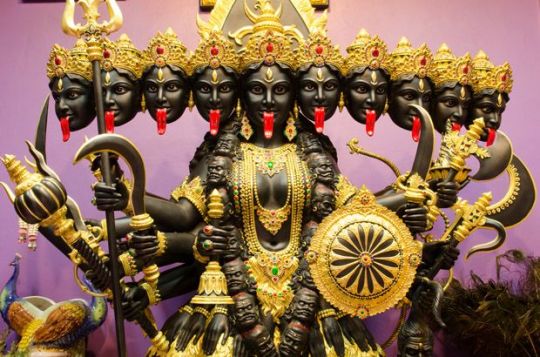
A/N: Indian mythology is incredibly complex and I can’t begin to untangle the intricate web in one single post. Hinduism and it’s various traditions are still vastly practiced by many people. For ease of understanding, common words and concepts will be linked to their definition or description throughout the post.
Who is Kali?
Also referred to as “Kalika”, Kali is a major Indian goddess who is heavily associated with time, change, creation, death, and destruction. Her name, Kali ( काली ), comes from the Sanskrit meaning “she who is dark” or “she who is black”.
She is worshiped in many different traditions of Shakta and Tantric Hindu sects, Buddhist sects, as well as by others individually.
Kali is most often depicted as blue and multi-armed depending on her form—of which she has a few and these forms will vary by tradition. While she is often depicted as blue, she is described in text as having black or dark skin. She is most often depicted as either half or fully naked. She sports a skirt made of arms and a garland made of heads. Kali is often seen wielding a severed head as well as a sword. She is also seen commonly holding various weapons or a shield.
Origin
Kali’s origin story is different depending on who you ask. She is most often seen as an aspect or distinct form of Devi in some traditions, though others see her as a deity in her own right.
One myth says that Kali emerged from Durga. In another tradition she is said to have been created when Parvati shed her dark skin. Some say she is an avatar of Parvati.
Another myth says that Parvati mixed with some poison in Shiva’s throat and emerged as Kali.
In yet another myth Kali is said to be an amalgamation created by either all of the gods or just Parvati for the purpose of defeating the demon Raktabija.
Partners or Lovers
Shiva (consort)
Children
No children mentioned.
Epithets
While Kali goes by many names due to the diversity in her worship, here are some that I’ve found. Some of these names are shared with other goddesses.
Kaushika - The Sheath
'The force of time'
'She who is time'
'She who devours time'
'She who is the Mother of time'
'She who is black time’
Kali Mata - The dark mother
Divine Mother
देवी (Dēvī) - The goddess
अंबा (Ambā) - The mother goddess
महिषासुरमार्दिनी (Mahiṣāsuramardinī) - The slayer of Mahishasura
ब्लैक देवी (Black goddess) - Kali is often depicted with dark blue skin.
श्यामा (Śyāmā) - The dark one
कट्टरा (Kattrā) - The fierce one
बीमला (Bimalā) - The pure one
नीला (Nīlā) - The blue one
चामुण्डा (Chāmuṇḍā) - The skull wielder
इन्दिरा (Indirā) - Powerful, mighty
रूद्रा (Rudrā) - Associated with the fearsome Shiva
ब्रह्माणी (Brahmāṇī) - Associated with the creator Brahma
चन्द्रबती (Candramatī) - Associated with moon
सुन्दरी (Sundarī) - Beautiful
भीमा (Bhīmā) - Terrible
मा काली (Mā Kālī) - Mother Kali
Forms
Unlike usual deep dives, we will have a section introducing you to a few of Kali’s most common forms. These are different from epithets so I decided to give them their own section. The amount of forms Kali has will also depend on tradition. The most common number of forms across traditions tend to be 8, 12, or 21.
Mahakali - “The Great Kali”
Dakshina Kali - A more benevolent and motherly form of Kali.
Samhara Kali
Bhadra Kali
Adya Kali
Chintamani Kali
Sparshamani Kali
Santati Kali
Siddhi Kali
Rakta Kali
Shyama Kali
Kalasankarshini Kali
Smashana Kali
Adharvana Bhadra Kali
Kamakala Kali
Guhya Kali
Hamsa Kali
Sarvamangala
Karpurakali
Bhavatarini
Chinnamasta
Vandurukāli
Chaturbhuja Kali
Krishna Kali
Notes
She is considered the ultimate brahman—or ultimate reality—in some Shakta and Tantric traditions of Hinduism.
In art, Kali is often depicted as standing on her consort, the god Shiva, who is prostrated beneath her. The mythology behind this varies, as do the symbolic explanations of the pose.
She is also seen often with her tongue out, the symbolism of this also varies but common interpretations are as follows: it could symbolize shame and that she lacks just that. Her tongue may symbolize that she is all-consuming.
Her tongue sticking out is a staple feature of Kali.
Despite her brutal depictions, she is seen as a mother goddess in her own right. Some of her forms are more gentle, but still depict her with her tongue out to show that she cannot be tamed.
Kali is considered often to be of a more wild nature, one that does not abide by societal standards. She is thought by some to be the ultimate reality, and all things begin and end with her.
Modern solo or pagan worshippers follow and worship Kali as a goddess that helps with self transformation. One who liberates her followers from ego.
Kali is also worshiped in some sects of Buddhism.
Since Kali is seen as a protector while also having a destructive side, this may suggest her role as a necessary destruction needed for self transformation. She eradicates fear and offers liberation and knowledge.
The first use of “Kali” as a proper name was in the Kathaka Grihya-Sutra.
I’ve also seen her referred to as the mother of language.
Kali is also considered an embodiment of shakti, feminine energy and creativity.
Mahakali is the first of the ten mahavidyas.
Modern Deity Work
Correspondences
Rocks/Stone/Crystals
Hematite, Obsidian, smoky quartz
Herbs/Plants
Red hibiscus, lotus
Animals
Lion
Holy Days
Kali Puja
Offerings
Rice
Lentils
Sweets
Songs
Poetry
Honey
Flowers
Acts of Devotion
Practice yoga—like really practice it. Learn its history and how it is as spiritual as it is physical, if not more so.
Fight for and protect the innocent. This could be as simple as donating to a good cause but protesting and advocating are great ways to emulate Kali.
Empower and respect women from all walks of life. From what I’ve read she is a protector of all but showing her that you hold women in the same respect as anyone else would be good.
Learn about the culture and religions she originates from. This is especially important. When getting to know someone you get to know their background and where they came from, the same should go for deities.
Create a shrine or altar—in general create a space to place offerings and to venerate her.
Learn traditional mantras for Kali.
Pray to her.
Dance for her.
Resources and Further Reading
Kali and her Tongue - Times of India
Kali - Wikipedia
Kali’s Names - A Quora Answer
Goddess Kali - Pujayagna
Ma Kali - Hindu American
Kali (Goddess) - Britannica
Kali - World History Encyclopedia
The Forms of Kali - The Jaipur Dialogues
The Goddess of Shakti - Maa Kali - eastindiastory
Rachel Fell McDermott, “The Western Kali” in Devi: Goddesses of India
Jeffrey Kripal, “Kali’s Tongue and Ramakrishna: Biting the Tongue of the Tantric Tradition,” History of Religions 34, no.2, November, 1994.
Kinsley’s “Tara, Chinnamasta and the Mahavidyas”, pp.161-177 in Hindu Goddesses.
Katherine A. Harper, “Seven Hindu Goddesses of Spiritual Transformation: The Iconography of the Saptamatrikas,” Studies in Women and Religion Vol. 28, The Edwin Mellen Press, 1989.
22 notes
·
View notes